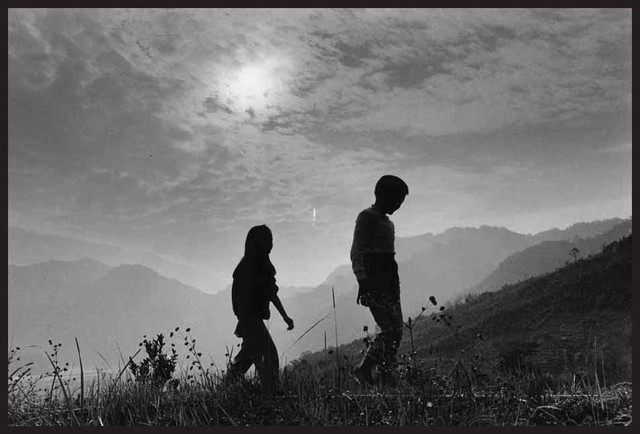
<山上的小兄妹>由於經年累月的訪探,使我跟泰安鄉一些山地小朋友,有著深厚的友誼...
幾年前,我來到他們的部落,當時正逢初秋,為了一窺滿山的紅楓葉,兩位小朋友帶我跋山涉水前往;一路上,我們談笑聲和著沙沙的風聲,他們的剪影映在夕暮的雲靄上,背景襯著綿延不斷的峰巒,驀然間,有一種感慨,他們真是被萬物山林所孕育出來的孩子。
如今,孩子們成長了,進入被鋼筋水泥所包裹的都市中工作,幾次見到他們,再也沒有聽見那年山上的開朗笑聲了。
【Siblings on the Mountain】A brother and sister walked solemnly up the mountain. Following in their footsteps, I saw the face of nature. Feeling so good about the mountains, I could not help but feel sad: Would anything here last for long? I really miss the laughter of the siblings.
●●●●●●●●●●●●●●●●●●●●●●●●●●●●●●●●●●●●●●●●●●●●●●●
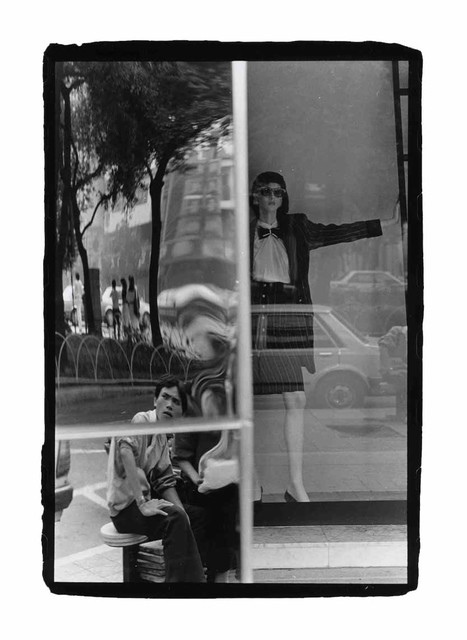
<展示櫃>
站在都市和鄉村,手持相機時的攝影心態大不相同。
鄉村的景觀與人情,令人感到溫暖與信任,按下快門成了一種分享與坦白。然而,在都市中,手中的相機卻像把獵槍,隨時像狙擊手般,要揭發隱晦其中的虛偽。好似櫥櫃中的假人,推開這張照片的幕簾,看到的真人世界卻是模糊而扭曲……
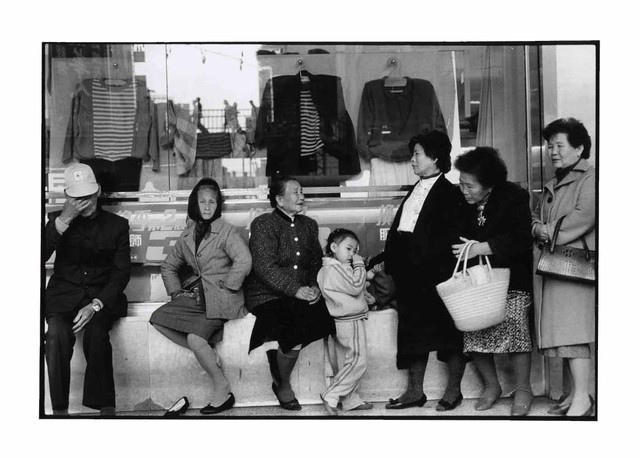
西門町櫥櫃前這群人,頭綁布巾,身著傳統舊式外衣,神色內斂謹慎,恍若一群初到城市的外地訪客,其中還有個小妹妹躲在平台上喝奶。這群人站在現代的展示櫃前,彷若另一個活生生的展示櫃,赤裸裸的展現出都市裡冷峻的價值。
【Window Dressing】In front of a bright, fashionable, modern window of a department store, there sits a group of middle-aged women and a couple of young girls. Just like an alternative kind of window dressing, they are telling the paradoxical story of city life.
●●●●●●●●●●●●●●●●●●●●●●●●●●●●●●●●●●●●●●●●●●●●●●●

<突兀>
九二一大地震後,我因為身在媒體裡工作,曾先後多次前往災區。猶記得當時彷若深陷人間煉獄,到處可見斷瓦殘垣,呼天搶地。然而,隨著時間消逝,人們的記憶似乎相當有限。
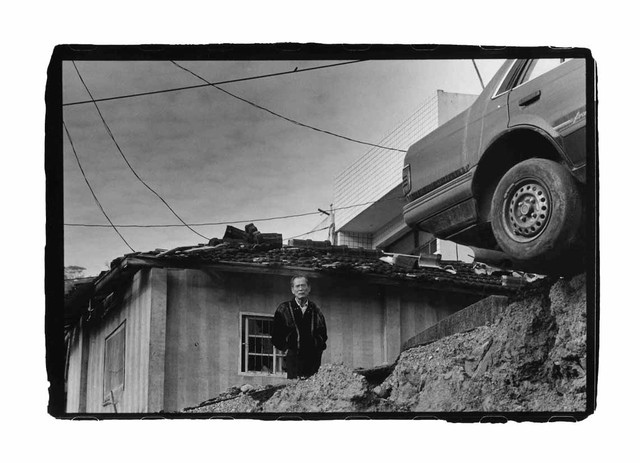
當激昂的情緒過後,我問自己看見了什麼?抽離掉那些情緒上賦予的激動字眼後,或許什麼也沒留下吧!只剩腦海中這一幕幕深烙的突兀景象。
【Absurd】This is a snapshot of a city corner after the 921 Earthquake. Utterly confused and absurd, four years ago, if I remember it right. With the crying and sorrow now fading away, what is left? All I'm left with are memories; the absurd sights in my head.
●●●●●●●●●●●●●●●●●●●●●●●●●●●●●●●●●●●●●●●●●●●●●●●
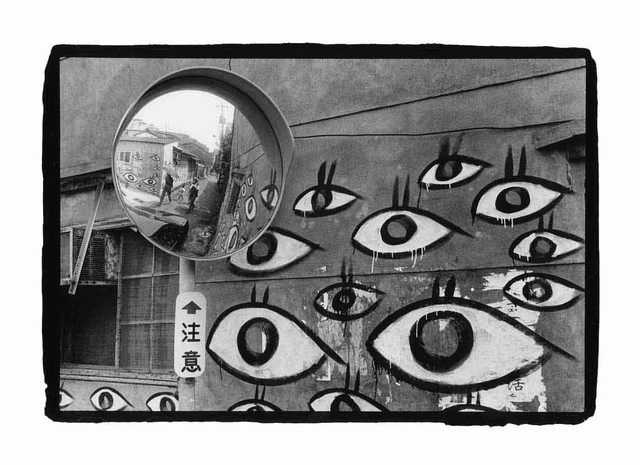
<指引>
生活在台灣這塊土地,幾乎很容易可見一些指引,有單純的符號,有交通號誌,還有的是警告標誌……;有些甚至明確的好像刻意要告訴我們什麼事似的……
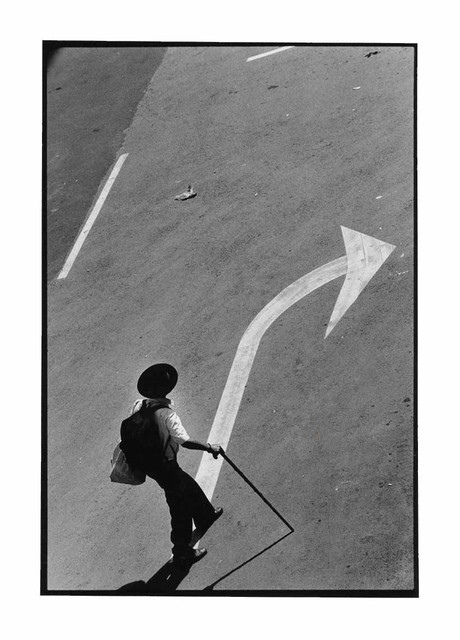
圖中的流浪漢,原本坐在台北車站人行道上,後來陽光漸漸大了,他索性背起一身家當,支起柺杖緩慢的走開。當時我站在天橋上,眼看著他走向一個地上畫有右轉標示的位置,就像社會給他們的指引,一個看不見目的的箭頭。
【An Arrow】The homeless man, carrying everything he owned, stood right at the starting point of the arrow. Yes, the arrow was indicating a direction. But would he follow it? I had no answer. Would the arrow bring him to the destination that he was aiming for? Again, I had no answer. It was only an arrow, after all.
●●●●●●●●●●●●●●●●●●●●●●●●●●●●●●●●●●●●●●●●●●●●●●●
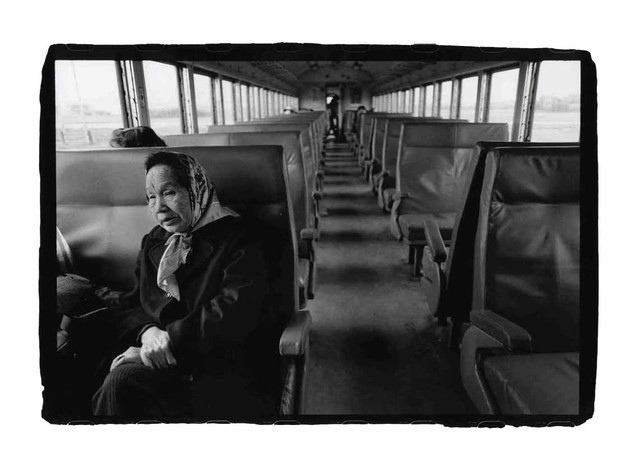
<人間列車>
十七歲那年,正逢《人間雜誌》的創立,深受其影響的我,一直希望有機會能用積極主動的方式,來紀錄生活在這片土地上的小人物。後來一次偶然的機會,和心儀的作家黃春明聊起天來。他對我說,去拍蘇澳線上的慢火車!因為富裕的人不會坐那列火車,搭乘那列火車的乘客多半是往返兩地的基層勞動者,也因此,車中充斥著孤、老、疾、厄等人生百態。黃春明稱那列火車為「人間列車」。
之後,有好長一段時間,我時常踏上「人間列車」,從一個手持相機的突兀外來客,漸漸開始和他們溶為一體。我們一起坐著、躺著、感受彼此身上沉默的無奈與喜悅。到最後,我不再拍照了,只管望著窗外飛馳的影像,傾倒滿腔的惆悵……。多年後有一天,我在車上突然見到一群年輕人拿著相機猛按快門,才突然驚覺,原來,我已成了「人間列車」上的一員。
【The Train of Life】Once I was lucky enough to meet Huang, Chun-ming, a local author that I had admired for a long time. He told me, "If you want to shoot the pictures of real people, just shoot on the Su-ao train!" The reason he gave me was a simple one, for the train was cheap, and what happened on the train would be nothing more than the reality of life: loneliness, illness, tragedy, and perhaps even death. Huang called it the "Train of Life." Several years passed, and I slowly became friends with the passengers on that train. I put down my camera. It wasn't until one day, when a couple of young men took my own photo, that I finally realized that I, too, had become part of the Train of Life.
●●●●●●●●●●●●●●●●●●●●●●●●●●●●●●●●●●●●●●●●●●●●●●●
《角落映像》全書未完待續,下次更新時間為本週五(03/21),敬請期待。
(攝影‧文字/陳建仲)
全站熱搜


 留言列表
留言列表
